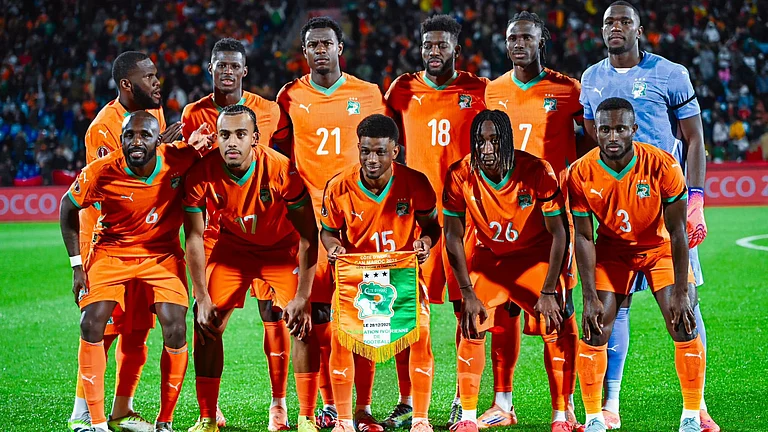However, in a cliffhanger of a match between India and Sri Lanka, Saurav Ganguly’s men clawed their way back from the edge of a precipice and Marvan Atapattu’s side tumbled down after being well on top. One of those matches that neither side deserved to win, or lose—the more the reason it will be a very good advertisement for the sport.
For Team India, there were lots of positives from the last-gasp win over Sri Lanka. You could see the on-field chemistry and the bonding between the players just before the final over that was crucial to their continued existence. This win has given the Indian team a lot of momentum, which will come in handy in the final.
Pakistan were actually knocked out because they couldn’t prevent India from getting a bonus point. Sad, but that’s just the way it is. However, they need not lose heart. Their morale-boosting win over India was a real shot in the arm for the new coach, Bob Woolmer. Already, it looks like his presence has had a calming effect on the team.
The most immediate effect a new coach can have on a team is to influence the group’s attitude and work ethic. Of the two, attitude is the most important. Without a good attitude and a willingness to work; a better work ethic will not make as appreciable a difference over the long term.
Shoaib Malik played the decisive innings for Pakistan. His comment that he came to the wicket ‘with a positive approach’ says it all. It is hard to play with confidence if you haven’t got any, so the state of mind that one takes to the wicket is critical. The hardest thing to do is to keep doing it. Just ask Virender Sehwag or a certain Lakshmipathy Balaji!
As well as Pakistan played, the Indian team was well below its best. The bowlers, especially Balaji, had a bad day and the fielding was shoddy at best. If it is hard for an individual to come up for each game, it is equally hard for a team to keep going day in, day out.

Ganguly’s comments before the game that he thought that India and Pakistan were in danger of playing each other too often was telling. If the captain shows any signs of wilting, you can bet that his team will not be far behind him. Every comment and action of the leader can have a ripple effect in a team environment, so best make the comment or actions positive wherever possible.
Considering Ganguly’s sentiments, plus the crisis of Zimbabwe and the ongoing struggles of Bangladesh, the rhetorical questions that cricket must ask soon is what to do with programming now that the 20/20 concept is going international. Can cricket afford to have the top players racing around the world, from one format to the other, without regard to their future or that of the game? I don’t think so.
At some stage, a decision must be made to bring some order to the major events that make up the international calendar. Cricket needs to draw on examples from other sports to maximise the drawing power of the game and the revenue it generates but first it should streamline the structure of the game at the international level.
I believe that a three-tiered structure with a clear promotion and relegation system could work. As well as on-field performance, other off-field criteria such as finances and a viable first-class structure to support the international team is essential. Before a team can be relegated, it must play—and be beaten by—the team that has qualified at the top of its division.Before a team can be promoted, it must first be able to compete at the higher level and demonstrate that it is financially viable and has an effective first-class structure in place.
Eight teams per division would be an ideal number and the make-up of the top eight teams could be different for the various formats of the game. A structure such as this would give every nation a clear pathway to the top in each format and would allow them to plan accordingly. It should also prevent the embarrassment that has occurred through the early promotion of Bangladesh and the disintegration of the structure of cricket in Zimbabwe. This way each country will get to play recognised international fixtures that will allow the players to test themselves on the way through and to have some success. It is important for players and teams to experience success and failure as they come through the development process to give them some chance of success at the highest level.
The damage that is being done to the young Bangladesh players who are being thrown in at the deep end will hold cricket back in that country for years to come. Test and one-day cricket is no place to be learning how to play the game. Without a viable first-class competition in which to train young talent, much of it will be destroyed before it has a chance to bloom.
Asking players to jump from youth internationals to the top level, or straight from club cricket, is akin to asking a 10-year-old to sit for a university entrance exam. It is fraught with problems and is bound to fail.
Without proper preparation, it is asking too much of even the most talented individuals. More importantly, it is also denigrating the standard of international cricket and that will have long-term ramifications that could destroy the game from within.


























